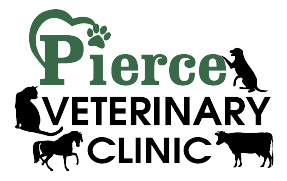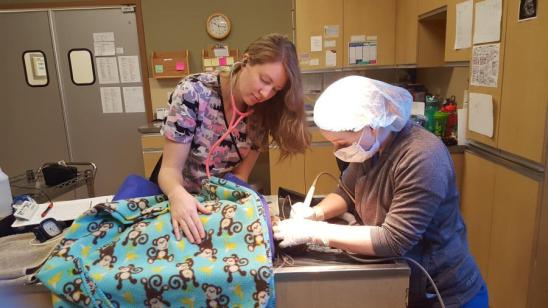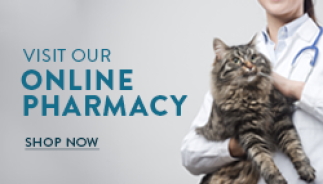Dental Cleaning process
What is done when I bring my pet in for a dental cleaning?
Step 1: Physical exam. The veterinarian will first examine your pet from head to tail, assessing each body system. This will help the veterinarian know what your pets teeth look like, what their heart and lungs sound like, and whether there are any other medical concerns that need to be addressed prior to a dental cleaning.
Step 2: Bloodwork analysis. Prior to sedation and anesthesia, we draw each pet’s blood and run a panel that will evaluate organ function to ensure the anesthesia process will go smoothly. Abnormal test results may result in a change of how we perform your pet’s anesthesia, or possibly a recommendation to delay the dental procedure until the underlying problems are resolved.
Step 3: Induction into general anesthesia. Once it is determined that your pet is healthy enough to be sedated, we will give them an injection that will relax them and prevent any anxiety or pain before, during and after their dental procedure. The type of medications we use with your pet is based on their breed, weight, and their pre-anesthetic bloodwork results. Once your pet is relaxed and comfortable we will place an intravenous catheter in one of their legs. The catheter will allow us to directly distribute medications and fluids with ease. We will then give your pet another injection. This injection will sedate them fully so we can intubate them and hook them up to inhalant (gas) anesthesia.
Step 4: Monitoring. Once under gas anesthesia we will use devices to make sure your pet is doing well while under anesthesia. These monitors will assist the doctors and technicians in knowing how well your pet is oxygenating their blood, what their blood pressure is, how their heart is working, respiratory patterns, and the level of gas anesthesia they will require. In addition to the electrical monitors, there will also be a technician by your pet’s side the entire time manually monitoring and taking notes.
Step 5: Full mouth radiographs. X-rays are a vital part of each dental procedure; they allow us to see how healthy the entire tooth is. Many times a tooth can look healthy but still be harboring disease below the gums. We will take an x-ray of each tooth prior to cleaning, and we will also take radiographs after each tooth extraction.
Step 6: Scaling. A full cleaning of each tooth includes using an ultrasonic scaler and hand tools. This allows us to remove plaque and calculus that has built up on the surface of the crown as well as under the gum line, where periodontal disease begins.
Step 7: Charting. Once the teeth have been removed of plaque and tartar, each tooth is measured for sulcus depth and charted. Sulcus depth tells us whether any of the tooth’s attachment has been affected by disease or not.
Step 8: Extractions if necessary. If it has been determined your pet needs a tooth removed, the doctor will first inject a local anesthetic to numb the area. Many teeth have several roots and may need to be surgically extracted. During this procedure the gum tissue is cut and elevated off the bone. The tooth is then cut into pieces according to the number of roots present. Each root is removed separately and the gum tissue is sutured over the root socket. Post extraction radiographs are taken to ensure no part of the tooth has been left behind.
Step 9: Polishing. Each tooth is polished with a mildly flavored prophy paste. This smooths the tooth surface and removes any small scratches that are left.
Step 10: Irrigation. The mouth is rinsed with saline and a bacteria-killing solution to clear any debris
Step 11: Recovery. After the dental procedure is over, a technician will stay with your pet until they are fully awake. Their endotracheal tube will be removed once they regain their swallowing reflexes and their IV catheter will be removed shortly before being discharged.
Step 12: At home care. The technician will go over any medications that will need to be administered and answer any questions you may have. Pets that received extractions will require soft food for 2 weeks and we will recommend they be seen for a complimentary recheck exam 2 weeks after their cleaning. You will also be sent home with a dental kit for at home care and prevention.
Where to Find Us:
Pierce Vet Clinic
707 N Brown St
PO box 657
Ellsworth, WI 54011
Phone: (715)-273-4632
Fax: (715)-273-7970
Email:
piercevetclinic@yahoo.com
Follow us on Facebook!
Regular Business Hours
Monday-Friday
8:00 AM to 5:00 PM
Saturday
8:00 AM to 1:00 PM
Your pet's own online profile!
Apply for your Care Credit Account today!








